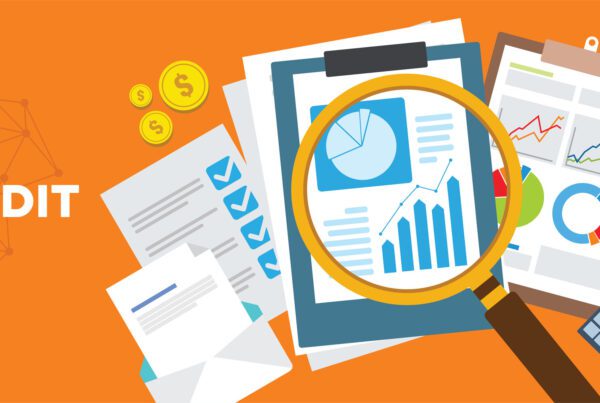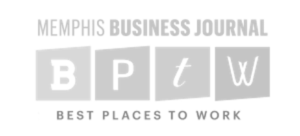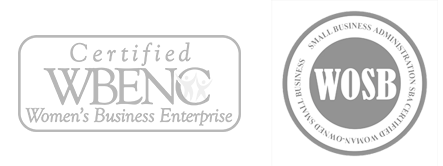Stakeholder interviews are a tried-and-true strategy for building a marketing plan with guaranteed outcomes. When organized and executed effectively, stakeholder interviews are a gold mine for marketing and business leaders, revealing previously unseen opportunities and obstacles for growth in your market.
However, without the proper preparation, you’ll waste your time and your stakeholders’ time, resulting in hours of conversations that yield few actionable insights. After decades of conducting these conversations across a variety of industries, here are 24 lessons I’ve learned about what makes for a successful stakeholder interview.
Stakeholder Interview Best Practices
Follow these best practices to conduct effective interviews with internal stakeholders, such as employees across job roles, and with external stakeholders, such as past, lost and active customers or prospects.
- Determine the right interview quantity: With internal interviews, look for 5 to 10 total stakeholders. With external interviews, look for 10 to 20 stakeholders. These ranges provide a balance between depth and breadth. Any fewer and a single outlier could notably sway the results.
- Select the right stakeholders: Identifying and involving the appropriate stakeholders ensures that you are collecting information from those who have the most direct or significant involvement or interest in the growth of your company. Including a variety of stakeholders with different roles, experiences, tenure, and viewpoints provides a more holistic understanding of the topic. For external interviews, be sure to include current and lost customers; ideal customers as well as those who aren’t ideal but should be based on their profile; long-standing and new customers; big spenders and small ones; those who buy exclusively from you and those who spend little with you; and, finally, prospective customers who are both active in your pipeline as well as those who previously chose not to buy.
- Provide context to the stakeholders: Offering context about the research, its purpose, and the expected outcomes helps stakeholders understand the significance of their input. It encourages their participation and cooperation. Explain that the purpose of the research is to help you stay focused on what matters most to your customers and the market. Make sure your stakeholders understand that their individual responses will be kept confidential and that their candor will be enormously valuable.
- Have a structured interview guide: A structured guide ensures the interview questions are consistent and bias-free, making it easier to compare and analyze the responses. Questions should be grouped by category of questions and customized by role (e.g., leadership, front line) or customer type (e.g., current, past, or prospective).
- Ask open-ended questions: Open-ended questions encourage stakeholders to provide detailed, unscripted responses. This allows for a richer exploration of their perspectives and experiences rather than simple “yes” or “no” answers.
- Engage in active listening: Active listening is crucial to fully understanding stakeholders’ responses. It involves not only hearing their words but also observing non-verbal cues and showing empathy and respect.
- Get comfortable with awkward silence: Be careful not to help the interviewee answer the question. You must remain an unbiased observer.
- Probe for details: Follow-up questions or probes can uncover deeper insights or clarify vague responses. This technique ensures a comprehensive understanding of the stakeholder’s viewpoint. If you feel you’re getting superficial responses, say “tell me more” as many times as needed until you are satisfied with the depth and breadth of the response.
- Offer confidentiality: Ensuring the confidentiality of the interview responses creates a safe space for stakeholders to express their views honestly, especially if the topic is sensitive or contentious.
- Record the interview: Recording the interview, with the stakeholder’s consent, is essential for accuracy. It allows you to review and transcribe responses, ensuring that you don’t miss critical details. It also allows you to be entirely present in each interview rather than focusing on your note taking. Note taking also distracts from your ability to read non-verbal cues. There are numerous low-cost platforms that will automatically transcribe your recorded content.
- Leverage the bridging technique: It can be challenging to keep these conversations on track. Use the bridging technique to steer the discussion back on track if it digresses. This ensures you cover the necessary topics while respecting the stakeholder’s perspective. The bridging technique involves acknowledging the current topic and then gently redirecting the interviewee to the topic at hand. It’s a conversational pivot—acknowledge, bridge, and steer. For instance, if a stakeholder veers off-topic, you might say, “That’s an interesting point (acknowledge), and it brings us back (bridge) to what we were discussing earlier about [subject] (steer).” This method keeps the conversation respectful and focused without dismissing the interviewee.
- Conduct analysis and document: Thoroughly analyzing and documenting the interview data is the final step in completing your stakeholder interviews. Your goal is to identify any topics worth exploring in greater detail via follow-up interviews and, ultimately, key themes worth exploring in the quantitative research.
Stakeholder Interview Pitfalls to Avoid
Avoid these pitfalls in internal and external stakeholder interviews to ensure the validity and credibility of your research.
- Avoid leading questions: For example, “Do you believe the most valuable benefit we offer is high-quality products?” The way this question is asked lends itself to a “yes” or “no” response rather than more detailed feedback, greatly limiting the kind of data you will gather. Leading questions can bias the responses by suggesting a preferred answer and can manipulate or influence the stakeholder’s viewpoint, which undermines the integrity of the interview. A non-leading version of this question is, “What do you believe is the most valuable benefit we offer customers?”
- Don’t make assumptions: Making assumptions about what stakeholders might say or believe can lead to confirmation bias, where you only hear what you expect to hear and disregard dissenting opinions or novel insights.
- Avoid bias: Whether it’s based on personal opinions or preconceived notions, interview bias can skew the interview process and lead to a misrepresentation of stakeholder perspectives.
- Don’t build an incomplete sample: Look for diversity of participants to ensure you have a sample that is representative of all your stakeholders. For example, often interviewers assume that a new employee or customer gives incomplete or uninformed answers. In some cases, newer team members and customers have a more objective point of view than individuals who have been part of the business on the employer side or customer side for a while.
- Avoid inactive listening: Failing to actively listen means missing important nuances, emotions, or key information that stakeholders may convey, resulting in incomplete or inaccurate data.
- Avoid interrupting or rushing: Interrupting the interviewee when they are speaking and/or rushing through the interview can leave your stakeholders feeling disrespected and may deter them from fully sharing their thoughts, hindering the research process. Instead, set aside enough time (roughly one hour) for a thorough interview process and prioritize your question guide from most to least important in case you don’t get through them all.
- Avoid question overload: Too many questions in a short period can overwhelm interviewees, causing them to provide superficial or incomplete responses. Prioritize questions and space them out effectively. A properly spaced interview begins with a couple of easy questions to warm up the interviewee and spreads the most complex questions throughout the interview. Generally speaking, look at 10 to 15 questions maximum in a one-hour interview.
- Don’t miss opportunities for clarity: If you don’t seek clarification when an answer is unclear or ambiguous, it can lead to misinterpretation or inaccurate data analysis. For example, if two stakeholders each said the company’s strongest differentiator is their products, one could have easily meant the overall quality of those products while the other meant the unique functionality. Remember to wear your unbiased observer hat and ask questions as if you’re new to the business.
- Don’t miss non-verbal cues: Body language and facial expressions can provide valuable context and emotional nuances. When you see a non-verbal cue you aren’t clear about, ask. Disregarding them can lead to missing vital information. When asking about non-verbal cues, be sensitive to how you position the question. For example, if you notice that an interviewee from the sales team seems frustrated with a question about what is contributing to the company’s low close rates and doesn’t seem to be sharing their full views on the matter, consider saying, “I can tell you’re passionate about the company, and I’m sure with your experience, you have ideas for how the company can improve on this front. Tell me more.” Don’t call out what you recognize as frustration; simply dig into the heart of the matter using my favorite interview statement of all: “Tell me more.”
- Don’t be rigid: Get comfortable with the questions in advance and allow the interview to assume a natural flow. A rigid script can stifle the organic percolation of conversation and prevent you from exploring unexpected insights or follow-up questions.
- Don’t forget to offer confidentiality: Failing to ensure confidentiality can deter stakeholders from participating openly and honestly.
- Don’t ignore or get defensive when faced with negative feedback: Negative feedback can be valuable for improving policies, products, or services. Ignoring it can lead to missed opportunities for growth and improvement. Don’t get defensive if you hear dissenting views. Instead, get curious.
Keep these ground rules in mind during your stakeholder interviews to conduct more rigorous and insightful research, ultimately leading to better-informed decisions, policies, or solutions based on a deeper understanding of stakeholder perspectives and needs.
By Lori Turner-Wilson, RedRover CEO/Founder, Internationally Best-Selling Author of The B2B Marketing RevolutionTM: A Battle Plan for Guaranteed Outcomes
Taking Action
Interviewing stakeholders is one of hundreds of best practices found in The B2B Marketing RevolutionTM: A Battle Plan for Guaranteed Outcomes — the playbook that middle-market B2B CEOs and marketing leaders lean on to scale. Backed by a groundbreaking research study, this book offers time-tested best practices, indispensable KPIs for benchmarking, insights on where your dollars are best spent, and, above all, the proven 12 BattlesTM Framework for generating guaranteed marketing outcomes. The B2B Marketing RevolutionTM is a battle-hardened approach to becoming an outcomes-first leader who’s ready to shake up the status quo, invest in high-payoff market research and optimization, and — yes — even torch what’s not serving your endgame. Download more than 50 templates, scripts and tools from the book on the Battle Reader Hub.
If you’d like to talk about how to build a marketing engine that delivers predictable results — whether you want to build it yourself or tag in our team to lead the way — we’d be delighted to help you get started.







